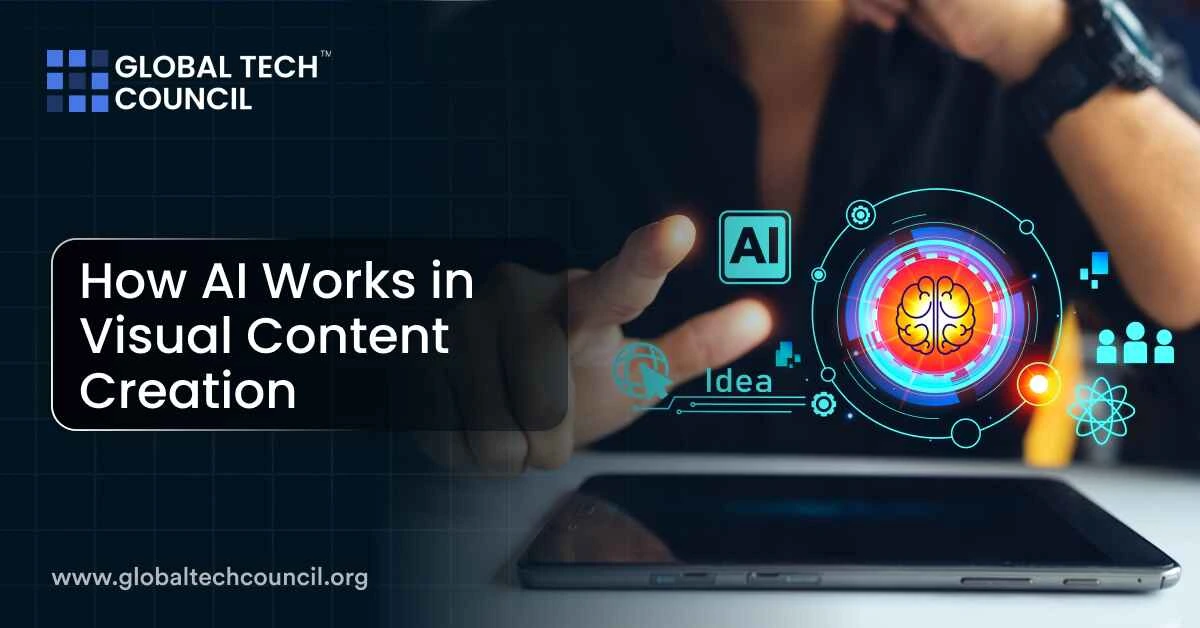Artificial Intelligence (AI) has brought major changes to how visual content is created, offering a range of tools that boost both creativity and productivity in exciting new ways.
How AI Has Grown in Visual Content Creation
The role of AI in crafting visual content has come a long way. Initially, it helped with simple automation tasks, but it now supports advanced generative models capable of producing top-quality images and videos. This shift has opened up content creation to more people, allowing both individuals and businesses to produce professional-level visuals without needing deep technical skills.
The CAIE Certified Artificial Intelligence (AI) Expert® certification offers insight into how AI powers visual content creation.
AI-Powered Tools for Design
A variety of AI-focused design tools have emerged, making visual creation more accessible:
- Canva’s Magic Studio: Canva recently launched Magic Studio, a collection of AI tools that help users create images, write social media posts, and develop custom content following brand guidelines. This tool has already been used more than 7 billion times, which speaks volumes about its popularity and effectiveness.
- Adobe’s Firefly Model: Adobe has also integrated generative AI into its suite of creative tools, primarily through its Firefly model. The goal here is to boost productivity and keep up with the rising demand for content, although some in the creative community have expressed concerns.
AI in Video Creation
AI is also making significant moves in video production:
- Runway’s Gen-3 Alpha: In mid-2024, Runway, a startup in the AI space, rolled out Gen-3 Alpha. This model can create 10-second video clips from simple prompts, like text or images. The aim is to assist artists in pre-production stages, helping spark creativity without taking away from their artistic vision.
- Captions’ Lipdub 2.0: Another startup, Captions, developed Lipdub 2.0. This tool allows users to create videos with AI-synced lip movements in multiple languages, making it much easier to reach audiences worldwide by simplifying dubbing tasks.
Becoming a Certified Prompt Engineer™ can help you master crafting prompts that guide AI’s visual outputs.
AI’s Role in Gaming and Entertainment
In gaming and entertainment, AI is transforming how content is produced and experienced:
- Netflix’s GenAI for Games: Netflix recently announced a new department focused on using generative AI for game development. This move is intended to speed up the creation process and offer new experiences to players, potentially shaking up traditional game design.
- Disguise’s Virtual Production: Disguise is another name making waves in live production. They’re combining hardware and software to create digital twins of physical venues. This technology, initially designed for live events, saw rapid growth during the pandemic as it expanded into virtual and XR production, drawing big investors like Epic Games and Carlyle Group.
AI-Generated Art
AI’s influence even reaches into the art world:
- Ai-Da’s ‘AI God’ Painting: Ai-Da, a humanoid robot created by a team at Oxford University, will be the first robot artist to have its work auctioned at Sotheby’s. The painting, an abstract of Alan Turing called ‘AI God,’ is expected to fetch between $120,000 and $180,000.
Challenges and Things to Think About
Despite the many benefits, AI in visual content has its challenges:
- Quality and Originality: AI-made visuals may sometimes lack the depth and unique touch of human-created art, sparking debates over the true value of AI-produced work.
- Ethical Concerns: Using AI in creative industries raises questions around authorship, intellectual property, and the potential for AI to replace human artists.
- Technical Hiccups: While AI has made impressive strides, it’s not perfect. For example, Netflix’s announcement of their GenAI for Games featured an AI-created image that left some viewers confused.
Wrapping Up
AI is changing visual content creation across many industries, from design and video production to gaming and art. These tools are helping streamline processes and encourage creativity. Earning the Certified Artificial Intelligence (AI) Developer™ credential helps you develop AI tools used in visual content creation. However, there are still challenges to consider, especially in balancing the benefits of AI with the value of human artistry. For AI to be a helpful partner rather than a replacement, addressing these concerns will be key.
